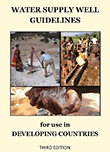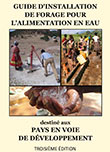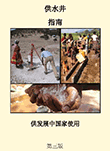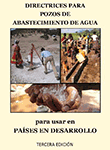The Water Supply Well Guidelines for Use in Developing Countries publication is a multi-year project that was initially distributed at the 2011 UO 2nd International WaTER Conference, where the first edition was enthusiastically received. The project is ongoing. The Third Edition is now available, containing many additions and changes. The Third Edition evolved following record downloads of the previous two editions and from insights provided from the 36th WEDC International Conference in Kenya 2013. The Third Edition is currently available in four languages. Click an image to access a PDF version:
ENGLISH |
FRENCH |
CHINESE |
SPANISH |
Field-friendly hard copies will be provided free of charge to those working on developing and maintaining groundwater supplies in developing countries (subject to available inventory or reprint). Email the author with your request, including language, number of copies and mailing address. |
|
Please email the author with comments/suggestions for future editions and of any errors observed. All are welcomed, both positive and negative. Email address is on page iii and also at the bottom of the inside back cover of the Third Edition.
|
||||
|
NGWA endorses the work: “…the National Ground Water Association congratulates this initiative and looks forward to its continuing evolution to capture best practices in groundwater protection and in water well design, construction, and operation and maintenance.” |
 A PDF of the second edition is available in SWAHILI. A PDF of the second edition is available in SWAHILI. |
|

